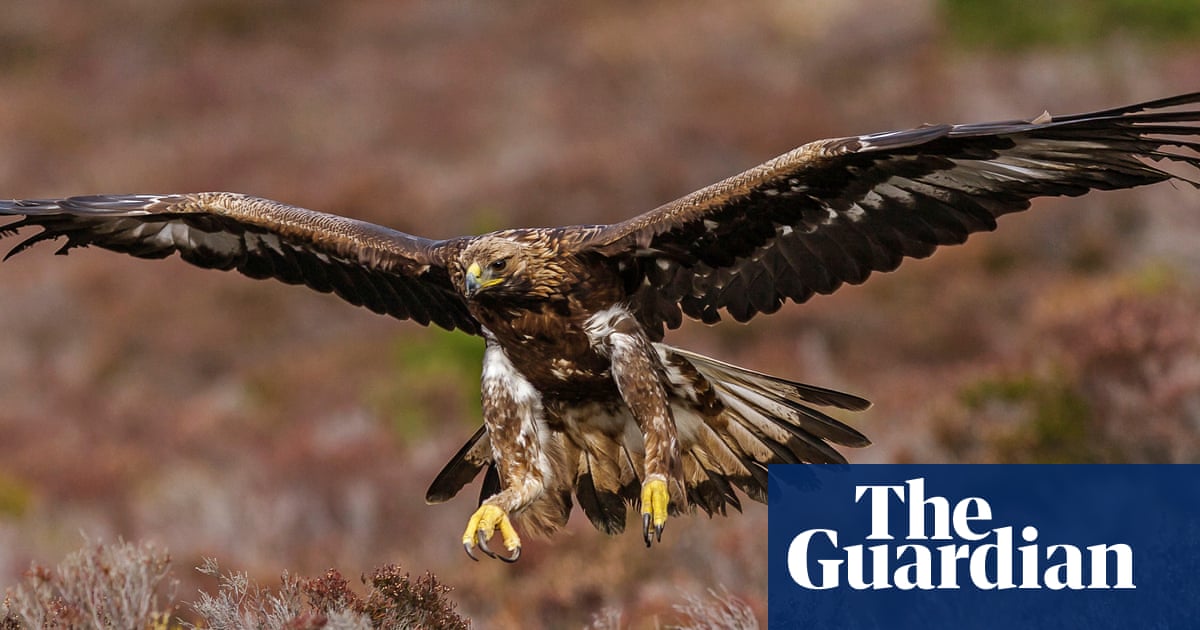
After over a century, golden eagles are on the brink of returning to England, as an upcoming study is anticipated to validate the presence of adequate suitable habitats to facilitate the revival of the UK’s most iconic bird of prey.
Golden eagles, boasting wingspans exceeding 2 meters, are sporadically sighted in regions like Northumberland, emanating from a thriving population in southern Scotland. A recent initiative to reintroduce these birds in Scotland is likely to serve as a blueprint for potential reintroduction efforts in England. Historically, due to persecution by gamekeepers and farmers, the species effectively vanished from England around 150 years ago. The final native golden eagle, solitary and residing in a sanctuary in the Lake District, vanished in 2015.
However, following the authorized release of beavers in England, overseen by the environment secretary, Steve Reed, plans are underway that could pave the way for the reintroduction of golden eagles. Forestry England has conducted a feasibility study exploring the possibility and methodology of reintroducing this species. Although the publication of the study is several months away, initial indications suggest the existence of ecosystems capable of supporting the bird population.
Reintroducing extinct species is a multifaceted process necessitating adherence to guidelines established by the International Union for Conservation of Nature (IUCN) and accreditation from Natural England, the government’s environmental watchdog. The success story of the South of Scotland Golden Eagle Project offers a recent roadmap to follow. Whereas robust populations of these birds dwell in the Western Isles, Hebrides, and northern mainland Scotland, boasting up to 600 breeding pairs in total, the southern region previously harbored only a few pairs.
Nonetheless, an official reintroduction effort launched in 2018 in Scotland has catalyzed a surge in the population from a mere three to four pairs to over 50, surpassing records from the past 300 years. Duncan Orr-Ewing, spearheading species and land management at the bird conservation body RSPB, suggests that a prospective English endeavor would possibly mirror this model, with a probable focus on northern England. The strategy implemented involving the transfer of single chicks from two-chick broods in established populations at the age of approximately six to eight weeks, remote feeding with limited human interaction, and release at selected sites, has yielded favorable results, as evidenced by the high survival rates in the southern Scotland golden eagle project.
Dependent on the presence of ample suitable habitats harboring adequate prey, the northern English landscape is expected to meet these requirements. Orr-Ewing explains that the primary diet of golden eagles includes grouse, rabbits, hares, alongside other wildlife such as deer calves, badgers, and fox cubs. Given the prevalence of grouse moors in the region, prey availability is unlikely to pose an obstacle.
The Department for Environment, Food and Rural Affairs (Defra) emphasized that an English reintroduction scheme would prioritize public participation and evaluate the impact on other species and the broader ecosystem. A Defra representative expressed optimism about the recovery of golden eagles and highlighted that the forthcoming steps regarding their reintroduction in England will be disclosed in due course.






